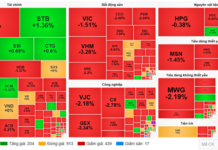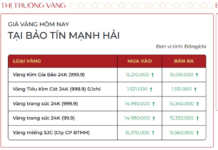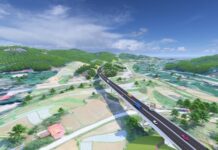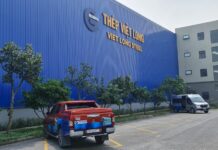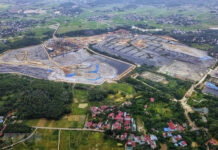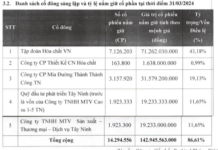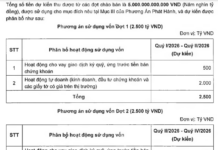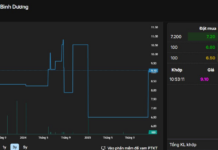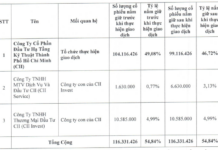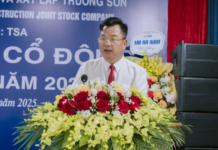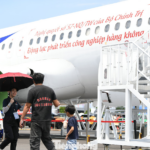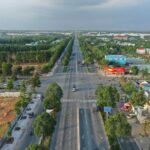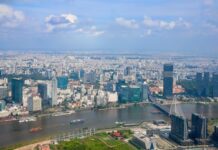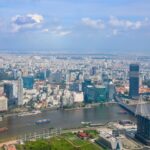The Nam Song Duong urban subdivision (Zone 2) has just been approved by the People’s Committee of Bac Ninh province for the task of planning subdivision at a ratio of 1/2,000. This is an important step to deploy detailed planning schemes and manage construction investment in the future.
According to the decision, the planning area covers a total area of more than 12,800 hectares, spanning the wards of Tri Qua, Song Lieu, Thuan Thanh, Tram Lo, Ninh Xa, and the communes of Lam Thao, Gia Binh, Luong Tai, Trung Chinh, and Trung Kenh. The planning location enjoys a favorable position, bordering the Hanoi expressway and Gia Binh International Airport to the north and adjacent to Hai Phong city to the east.
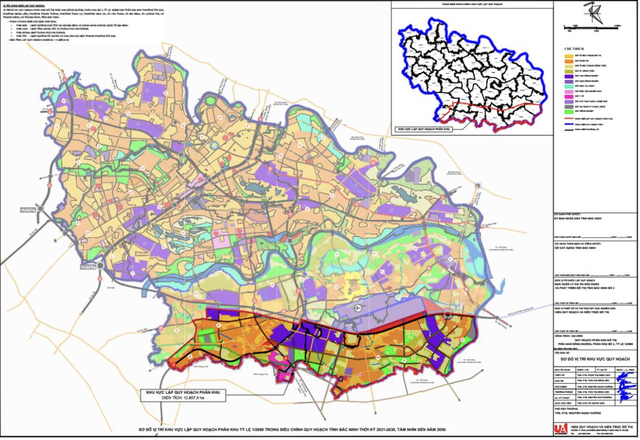
Location of the planning area south of Song Duong River – Subdivision 2. Source: Environmental Impact Assessment Report
Nam Song Duong is envisioned as an international multifunctional airport city, developed following the TOD model with high density and modern infrastructure.
Beyond being a satellite city serving Gia Binh Airport, this subdivision is also planned with strategic functions: Free Trade Zone – Bonded, multimodal logistics, dry port, industry serving high-speed railways, R&D zone, software park, convention and exhibition center, hotels, offices…
The main functional areas include: International multifunctional airport city, residential area serving workers and laborers in industrial parks, while also renovating and sustainably developing existing residential areas and villages.
The current population is approximately 200,000 people, and by 2050, the permanent population is expected to reach 300,000 – 350,000 people. If we include the workforce, tourists, and service users, the infrastructure-serving scale can accommodate up to 750,000 – 800,000 people.
The Nam Song Duong urban subdivision (Zone 2) project is organized by the Management Board of Civil and Urban Development Projects of Bac Ninh Province No. 2 for planning, appraised by the Department of Construction, and approved by the People’s Committee of Bac Ninh province. The completion time for the entire subdivision planning is expected to be within 9 months, excluding the appraisal and approval stages.
The emergence of this subdivision is expected to transform Bac Ninh into a new international urban-airport center, playing a pivotal role in connecting the key economic region of the North. Simultaneously, it serves as a driving force to open up an entirely new development space for the Northeast region, marking a turning point in infrastructure, urban development, and international trade.
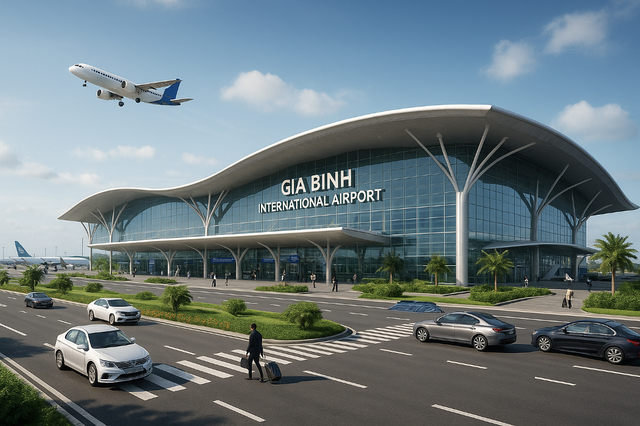
Gia Binh Airport. Source: Ministry of Construction
Regarding the Gia Binh International Airport project, located about 40 km from Hanoi, the construction of Gia Binh International Airport (Bac Ninh) officially commenced on August 19, 2025. As per the plan, the airport will be essentially completed and put into operation by the end of 2026, in time to serve the APEC Summit 2027.
Spanning an area of 1,900 hectares, the airport entails a total investment of approximately VND 120,800 billion. In terms of size, this project surpasses both Noi Bai and Tan Son Nhat airports (around 1,500 hectares), second only to the Long Thanh airport (5,000 hectares).
Designed to meet the 4E standard, the airport is projected to handle approximately 30 million passengers and 1.6 million tons of cargo annually. The types of aircraft operating here include B777, B787, A350, A321, along with special aircraft and specialized aircraft. By 2050, the capacity is expected to reach 50 million passengers and 2.5 million tons of cargo per year.
The apron design in the passenger and cargo terminal area can accommodate around 81 parking positions. With a vision towards 2050, the expansion of the apron will provide approximately 123 parking positions, with room for further expansion if needed.
“The $100 Aircraft-Grade Fastener Conundrum: Why Vietnam’s Manufacturing Sector is Yet to Take Off.”
“Vietnam’s current focus on manufacturing neglects the crucial need to invest in infrastructure and technology. Without a shift in focus, we risk remaining confined to low-end segments and missing out on global supply chains. A telling example is the country’s inability to produce a $100 bolt used in commercial aircraft wheels, highlighting the urgent need for a strategic rethink to elevate our position in the global market.”
Signing a VND 56,000 Billion Contract for the Hanoi Ring Road 4 Highway Project Under the BOT Model
On September 3rd, the People’s Committee of Hanoi and the consortium of investors for the Ring Road 4 highway project (component project 3) – Capital Region, signed a Build-Operate-Transfer (BOT) contract worth over VND 56 trillion. This significant milestone paves the way for the investors and contractors to commence preparations for the project’s construction.
Unlocking New Opportunities for Investors: The Transformative Impact of Key Infrastructure Developments in Southern Ho Chi Minh City
According to Ms. Duong Thuy Dung, Executive Director of CBRE Vietnam, investors have recognized the irrationality of real estate prices in the center of Ho Chi Minh City and are strongly shifting their focus to the neighboring areas. These peripheral zones benefit directly from existing and upcoming infrastructure and belt road projects, offering significant growth potential.
“Danang’s Residents Rejoice: A City Transformed”
Post-merger, Da Nang city identified transportation infrastructure as a key “launchpad”. This is seen as the foundation for a transformative shift in urban, industrial, tourism, and service landscapes.
“Quảng Ninh Takes Off: Primed to Become Northern Vietnam’s Premier Investment Destination”
The province of Quang Ninh is entering a breakthrough phase, fueled by the convergence of three powerful drivers. First, it attracts high-quality FDI inflows, showcasing its appeal to foreign investors. Second, its strategic infrastructure is now complete, boasting highways, sea ports, and airports that seamlessly connect it to the rest of the country and the world. But it’s the third driver that truly sets Quang Ninh apart: the emergence of modern coastal urban complexes. These complexes are crafting a new “runway” for growth, transforming the province into a leading investment hub in Northern Vietnam.


